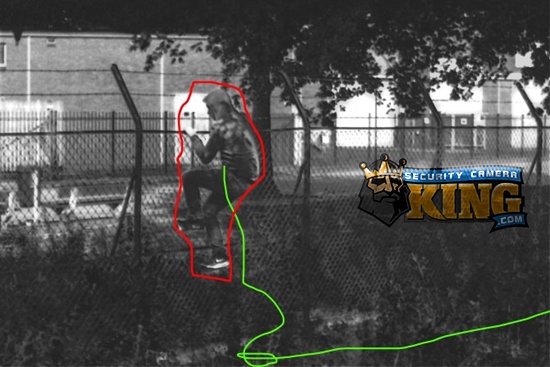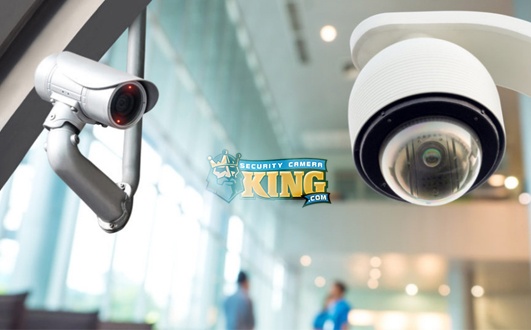Implementing thermal imaging surveillance cameras can provide consumers with a powerful proactive security solution that does not share the reactive limitations of other security cameras. Typical CCTV security cameras suffer from false alarms and are unable to achieve early detection when it matters most.
One of the most innovative and increasingly popular advancements in the security and surveillance camera industry is the use of intrusion technologies to better protect assets, people, and property from potential threats. Although they are very effective in delivering alerts to deter crime before it happens they are also problematic because these same technologies are sometimes too sensitive and can produce annoying false alarms which can make the system difficult to use.
These false alarms can make it difficult for emergency services such as law enforcement to properly validate threats when they occur due to limited resources. Worst still, false alarms can be caused by anything from animals and foliage to certain weather patterns which often makes intrusion technologies unreliable to law enforcement and security guard organizations.
The question, therefore, is how can these systems reduce false alerts and detection failures and make the process of identification more accurate? Thermal imaging surveillance cameras are able to do both and have an overall better rate of success and efficiency when it comes to validating the credibility of a possible threat.
Reliability and dependability are the most important factors when it comes to any security surveillance system no matter the environment. Thermal imaging surveillance cameras are increasingly becoming the most effective way of enhancing the accuracy of intrusion detection and identification while also keeping false alarms to an absolute minimum.
A Short History Of Thermal Imaging
The first thermal imaging surveillance cameras were developed in the late 1950s and were developed primarily for military use. Military experts quickly recognized the incredible advantages the technology provided when it came to identifying enemy forces clearly in the darkest environments.
For the very first time in military history, commanders and soldiers on the ground could see clearly in the night and could even identify details through fog, snow, smoke, and difficult weather. They were quickly adopted for military applications and revolutionized military strategies and tactics from that point forward.
By 1965, thermal imaging technology was introduced to the commercial market and saw great popularity with power companies who adopted the technology for power line inspection. Eight years later in 1973, portable cameras equipped with thermal imaging became available. However, these early variants were very cumbersome and even contained liquid nitrogen as a coolant for the infrared detector.
It was not until 1997 that the company FLIR developed a thermal imaging camera that used a new technology called a microbolometer which finally made thermal imaging surveillance cameras practical to use in both commercial and military markets. With increased durability and reliability compared to their earlier counterparts, thermal imaging technology become widely available and adopted.
Disadvantages Of Motion Detection Technology
Motion detection technology is limited when compared to thermal imaging cameras, although they come with functions such as intrusion detection, motion detection, missing object, and more. These functions have some benefits, however, they are also known to be unreliable when it comes to the overall accuracy of these technologies.
Any security surveillance camera on the market today is more than capable of producing useable footage during the day when there is plenty of visible light. Night security cameras, however, have difficulties producing clear detailed images primarily because of their dependency on lighting conditions.
Long-range cameras also share the same difficulties when it comes to properly detecting objects and people clearly in low-light environments and during night time. Similar camera systems, such as visible light security cameras, are also extremely limited when it comes to properly detecting objects and people based on visual contrast.
Utilizing camouflage has been shown to be an easy way of avoiding visible light cameras and they have clear limitations in identifying threats found in environments where there are blending colors or similar patterns. Furthermore, visible light cameras have been found to have limitations when it comes to identifying meaningful details from foliage, shadows, trees, and animals.
There are similar disadvantages when it comes to more conventional and widely available motion detection sensors. Without the support of functioning security surveillance cameras, motion detectors cannot properly detect and verify intruders which often makes these systems more or less obsolete.
Thermal imaging surveillance cameras, by contrast, are able to quickly and accurately detect threats while providing the ability to verify the validity of the threat, which leads to much more decisive action.
Benefits Of Thermal Security Camera Systems
Through the usage of video analytics, thermal security camera systems are able to clearly identify specific details found in people and vehicles. Although IR security cameras are arguably even better at providing useable surveillance footage, the video analytics found in thermal security cameras reduces the potential for false alarms.
The thermal imaging technology found in these security cameras allows for possible threats to be quickly and clearly identified, even across great distances that may be obscured by lighting and environmental factors. Unlike visible light security cameras, thermal imaging surveillance cameras do not need visible light to function but instead use sensors to detect invisible heat radiations.
This allows security professionals to clearly identify possible threats and highly enhances the effectiveness of their response. The heat signatures produced by people and vehicles can be easily identified despite any external conditions like weather or time of day.
Another benefit produced by thermal imaging cameras is their ability to reduce the need for a large number of cameras within the surveillance system, which saves consumers money over the course of time. It is important however to have thermal security cameras that are equipped with the proper video analytics technology in order to receive the most benefits from the system.
Thermal technology is becoming increasingly adopted for a number of applications, such as perimeter security through the continued advancements in video analytics.
Facebook | Twitter | Google+ | YouTube













